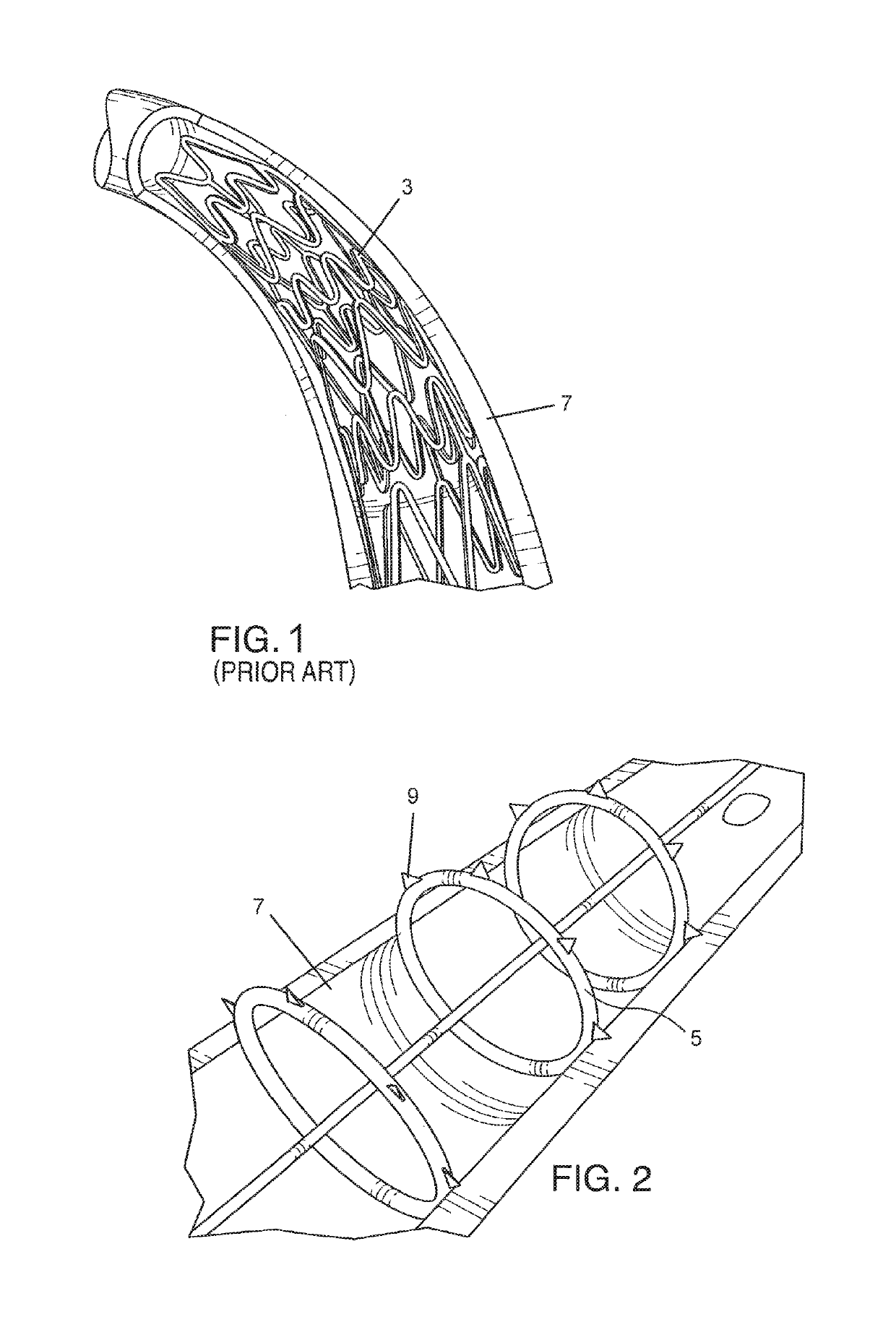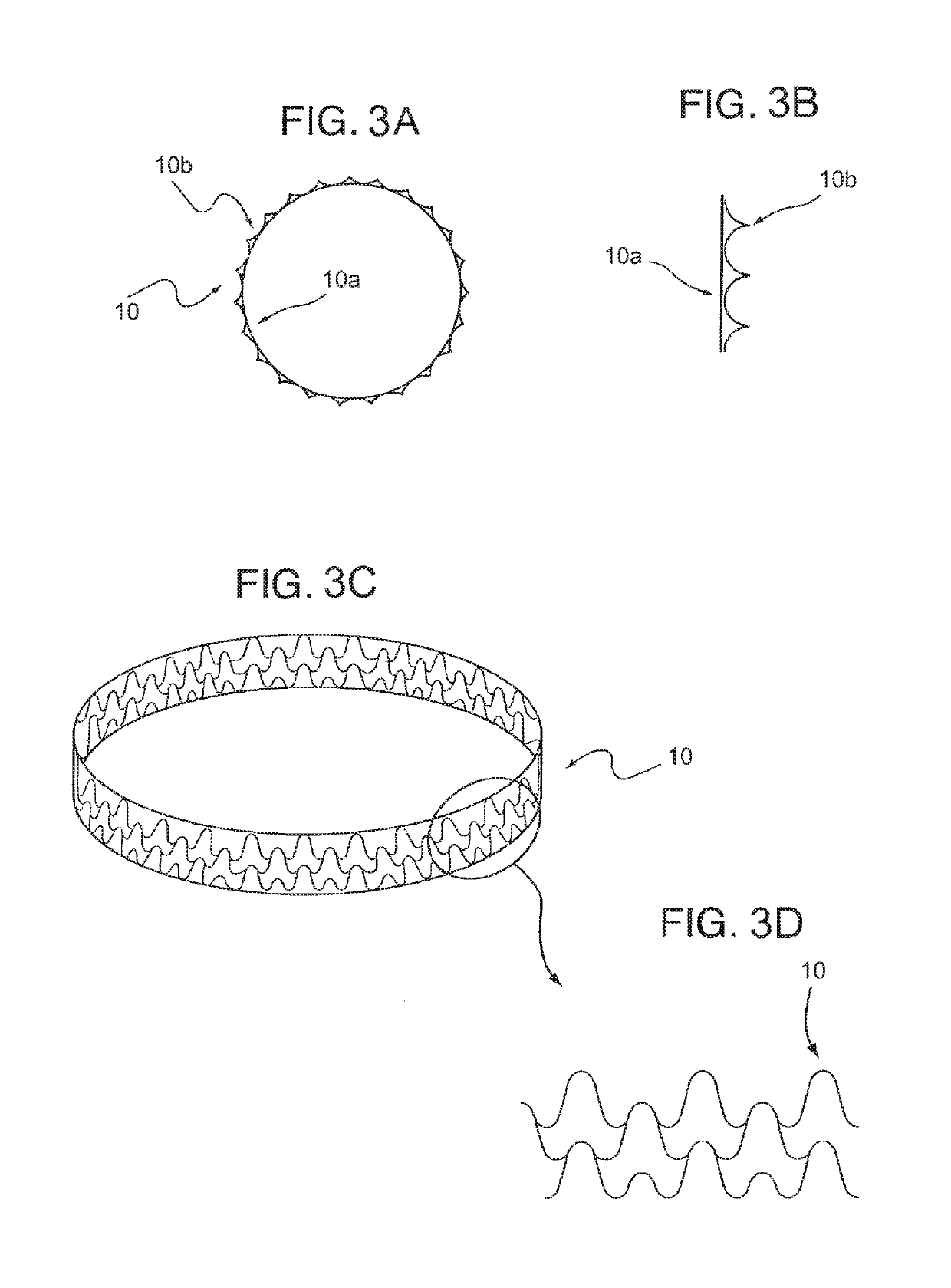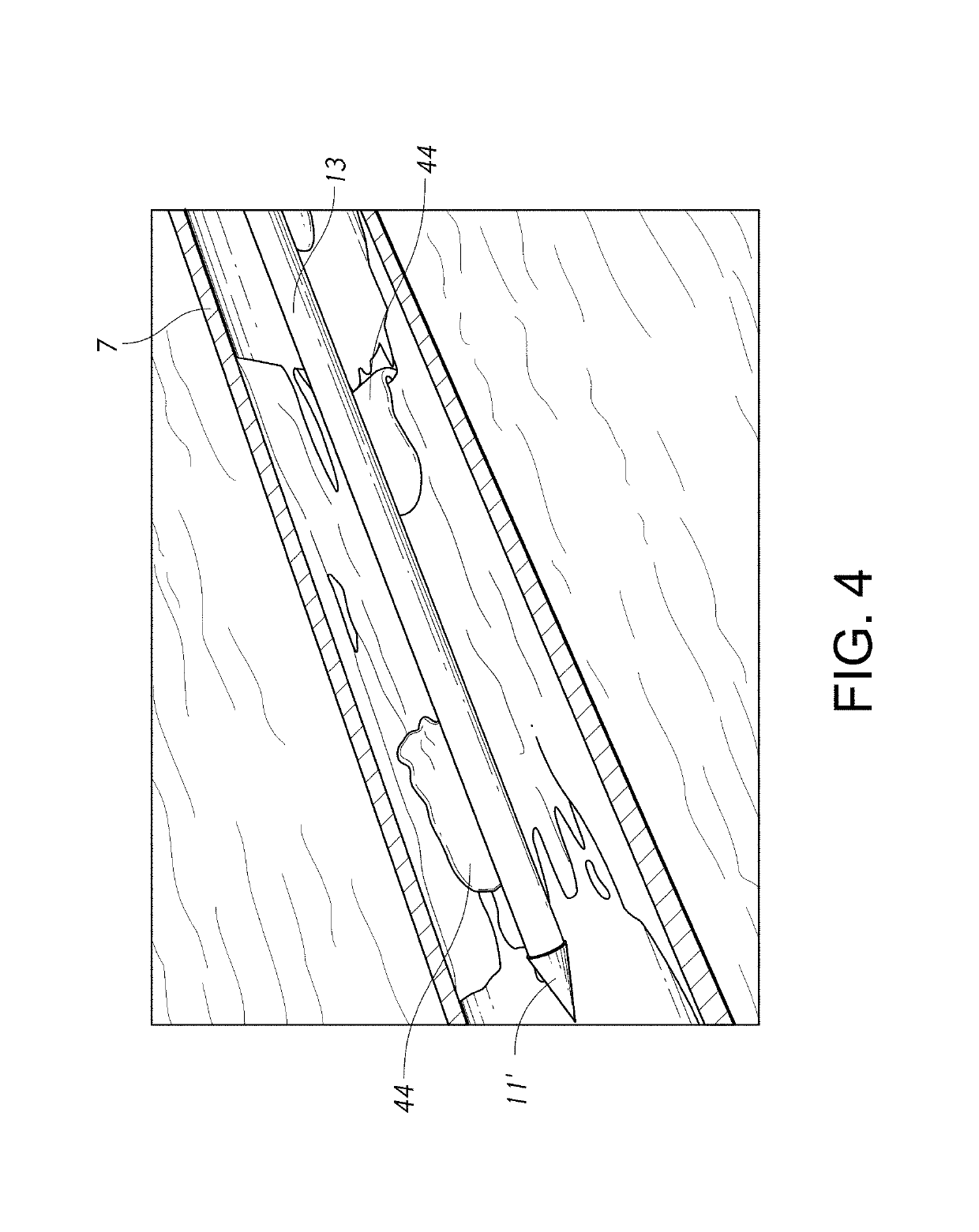Endovascular impant
a technology of endovascular impaction and occlusion, which is applied in the field of atherosclerotic occlusive disease treatment, can solve the problems of uncontrollable plaque disruption in the balloon angioplasty process, the lumen of the blood vessel at the site of treatment is usually somewhat larger, and the process of balloon angioplasty is not controlled. full dilatation to its intended size,
- Summary
- Abstract
- Description
- Claims
- Application Information
AI Technical Summary
Benefits of technology
Problems solved by technology
Method used
Image
Examples
Embodiment Construction
[0051]The subject matter of this application is directed to the improvement of a plaque tack or staple device. The plaque tack or staple device can be used for treating atherosclerotic occlusive disease. The plaque tack can be used to hold loose plaque against a blood vessel wall. The plaque tack can include an annular member configured to apply an expansion force to the loose plaque.
I. Overview of Endolumenal Tack Treatment
[0052]FIG. 2 shows one embodiment of a plaque tack or staple device 5 that includes a thin, annular band or ring of durable, flexible material. The tack device can be inserted into a blood vessel in a compressed state and installed in an expanded state against the blood vessel wall using a catheter delivery mechanism at one or more specific positions of loose plaque. The plaque tack 5 can be deployed after or as part of an angioplasty procedure. The plaque tack 5 is adapted to apply an expansion force against the plaque in the blood vessel 7 to press and hold the...
PUM
 Login to View More
Login to View More Abstract
Description
Claims
Application Information
 Login to View More
Login to View More - R&D
- Intellectual Property
- Life Sciences
- Materials
- Tech Scout
- Unparalleled Data Quality
- Higher Quality Content
- 60% Fewer Hallucinations
Browse by: Latest US Patents, China's latest patents, Technical Efficacy Thesaurus, Application Domain, Technology Topic, Popular Technical Reports.
© 2025 PatSnap. All rights reserved.Legal|Privacy policy|Modern Slavery Act Transparency Statement|Sitemap|About US| Contact US: help@patsnap.com



